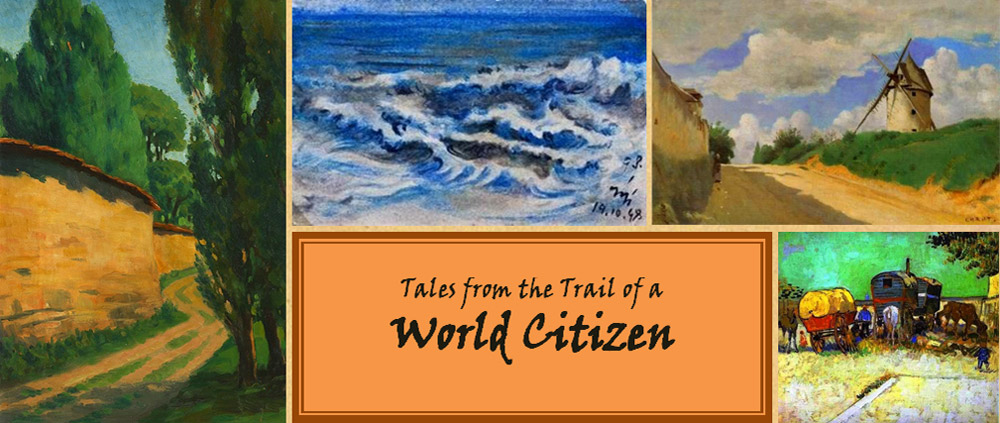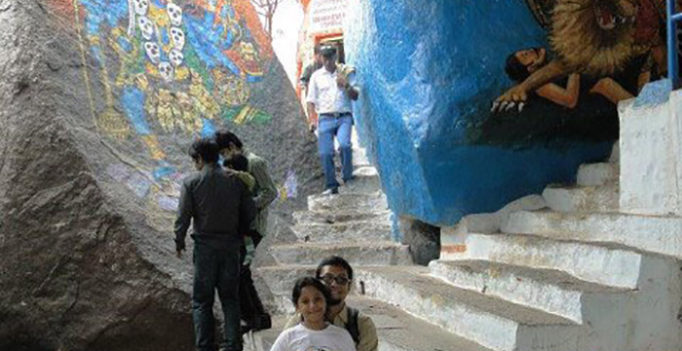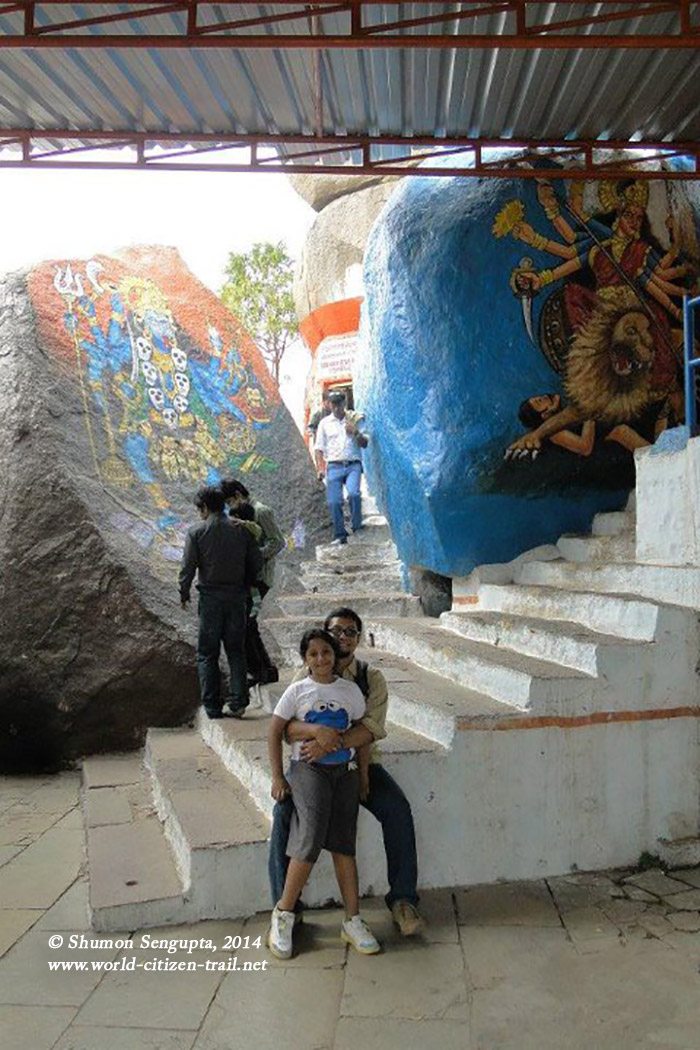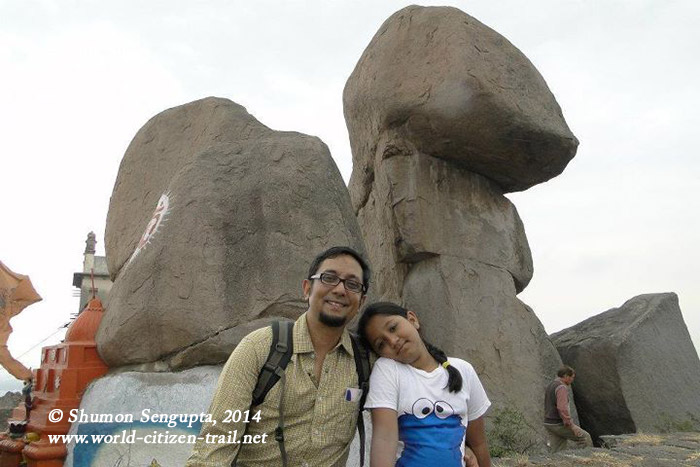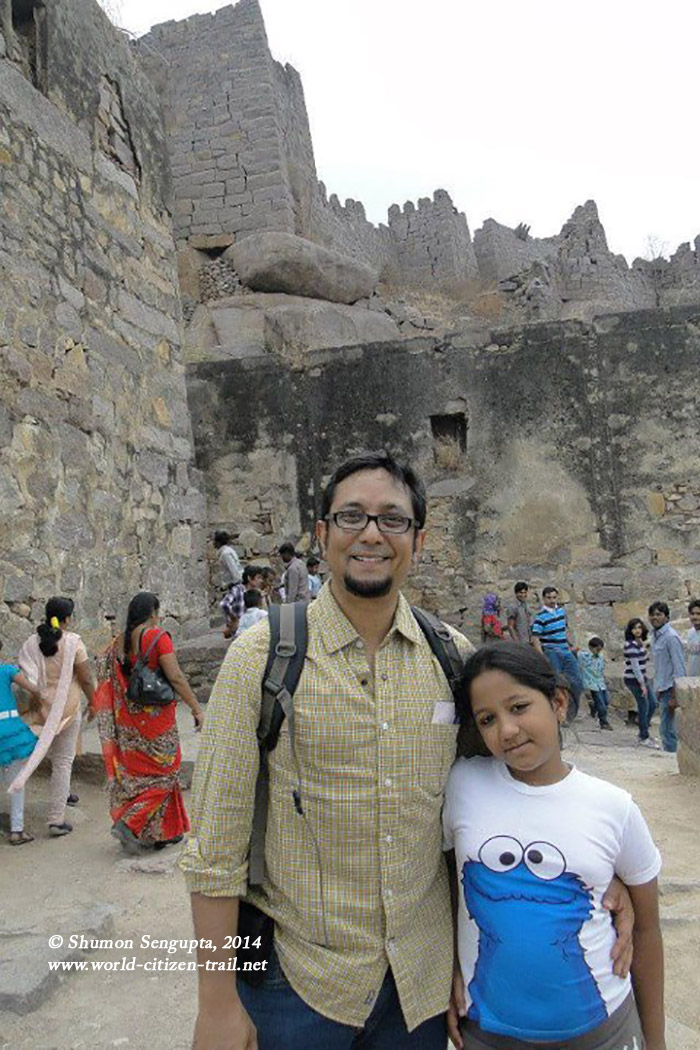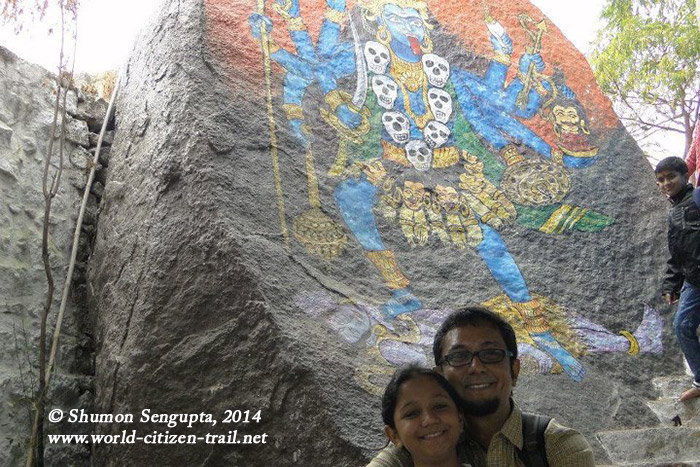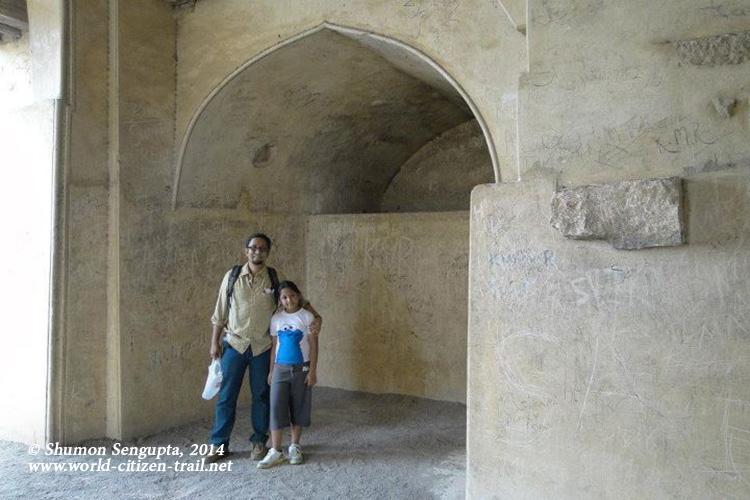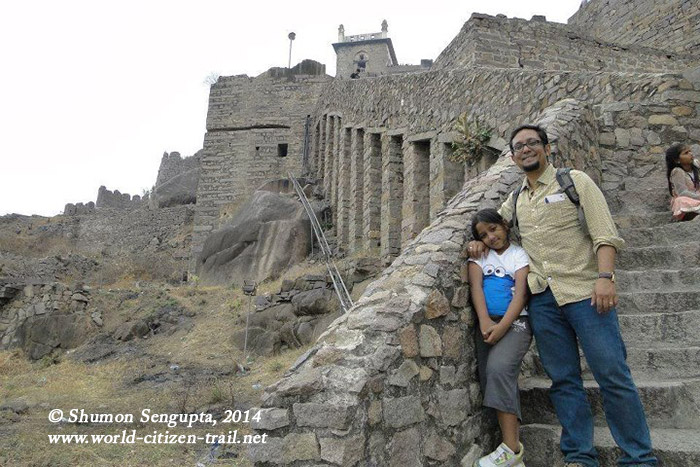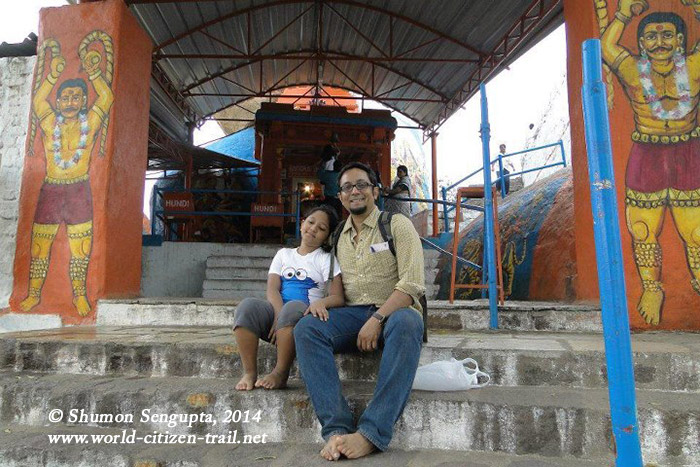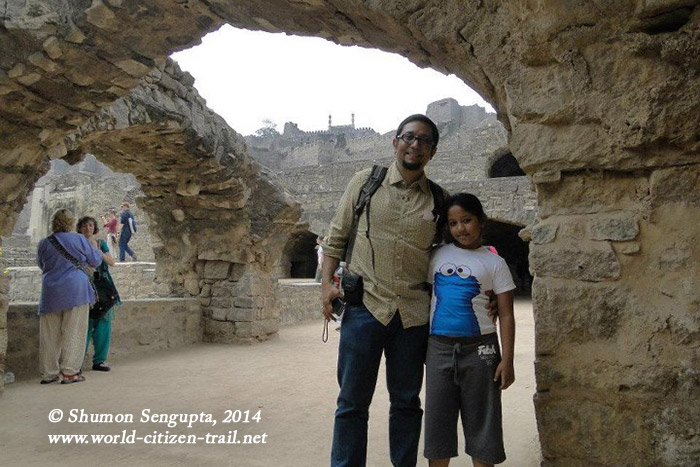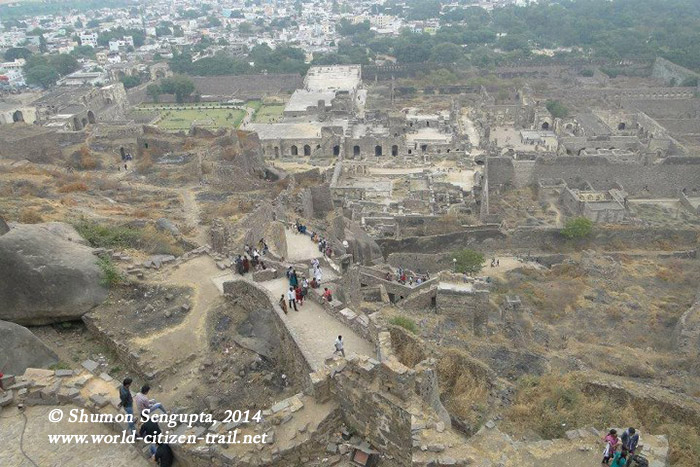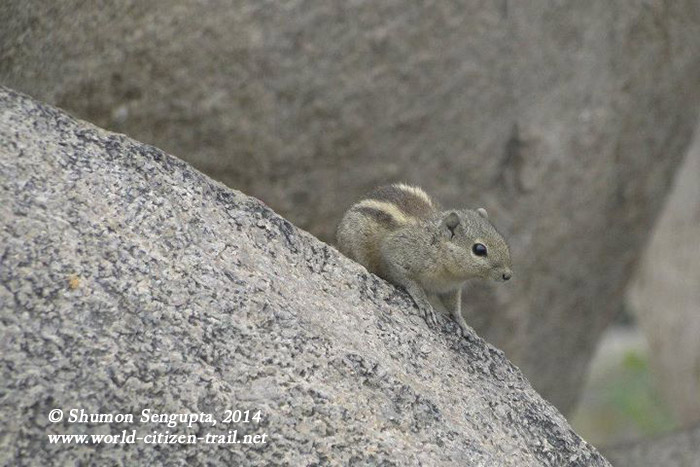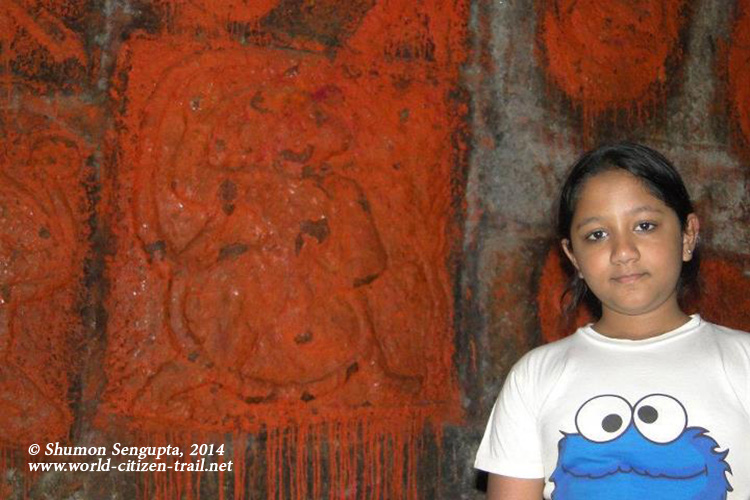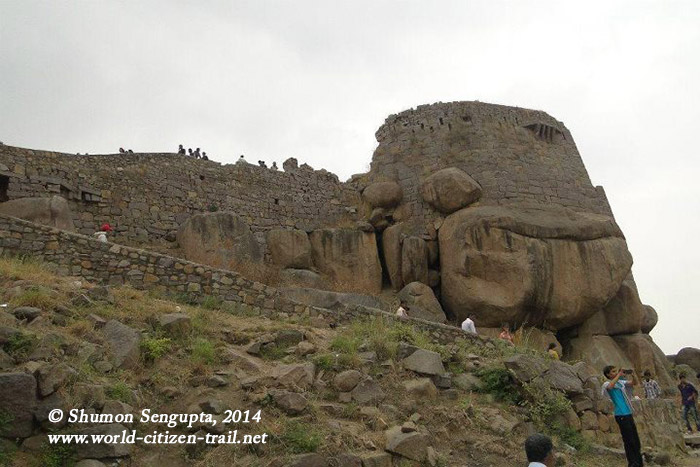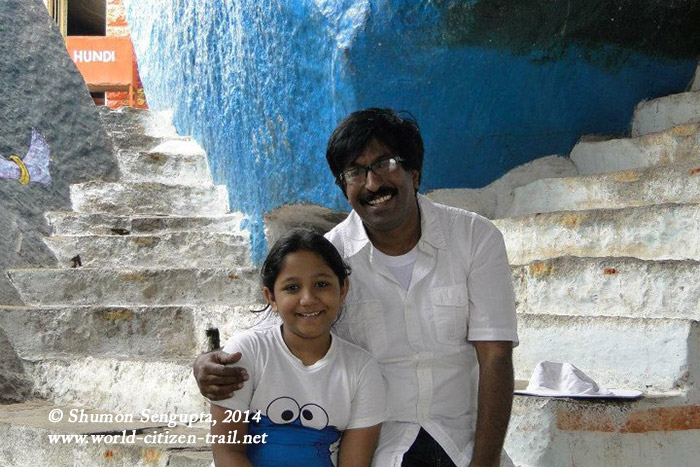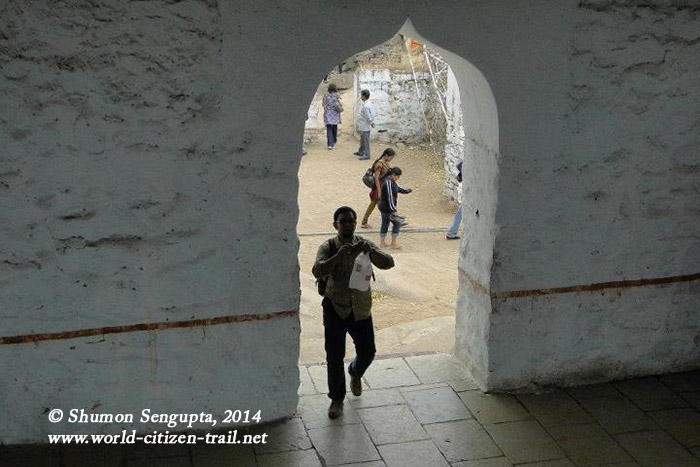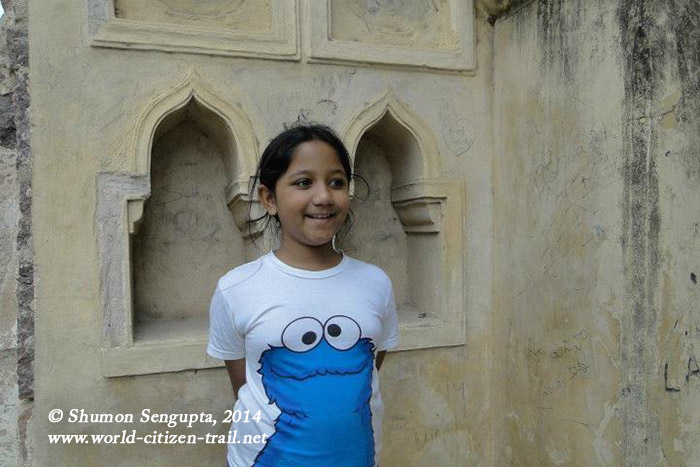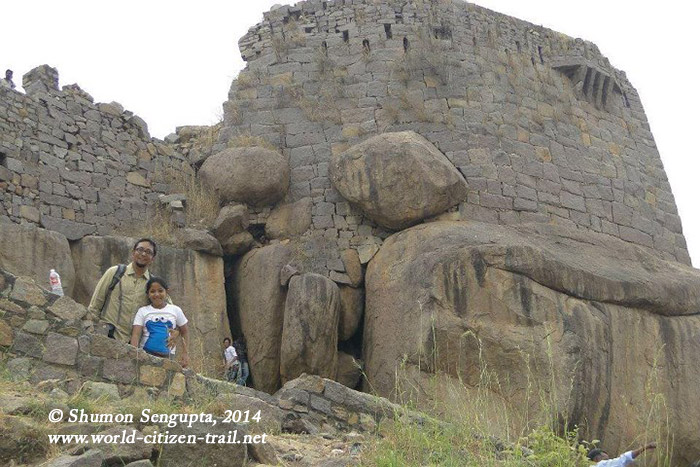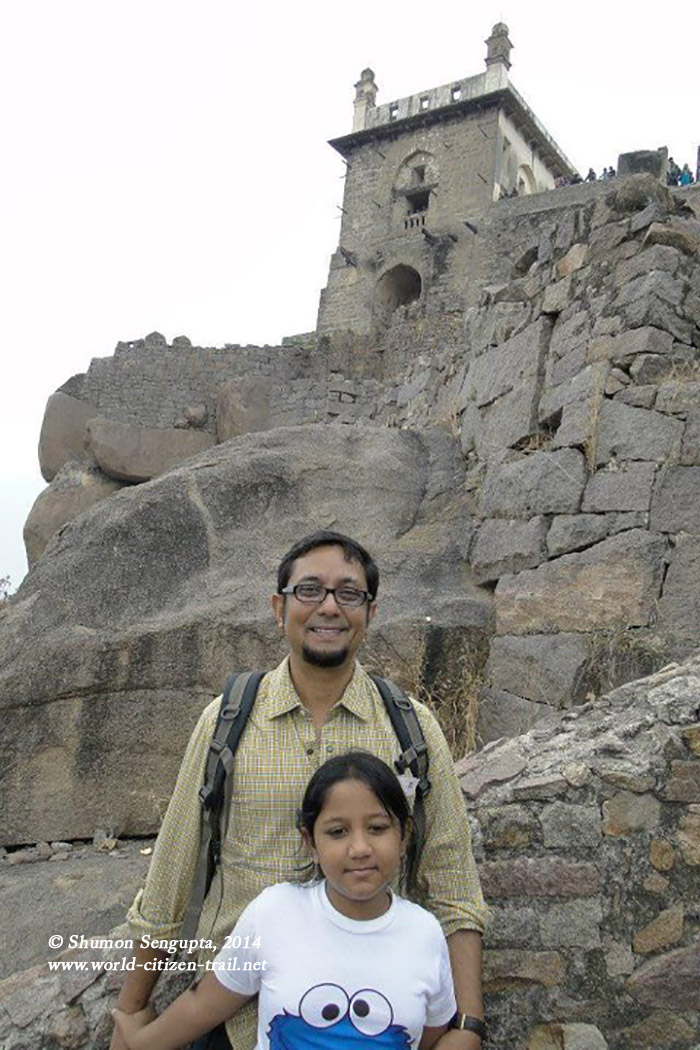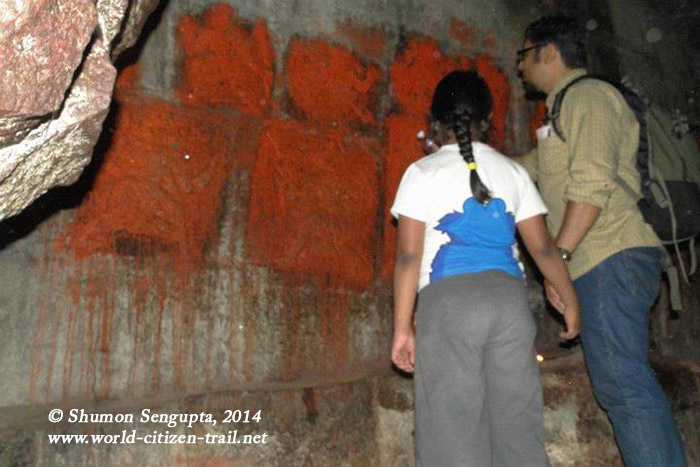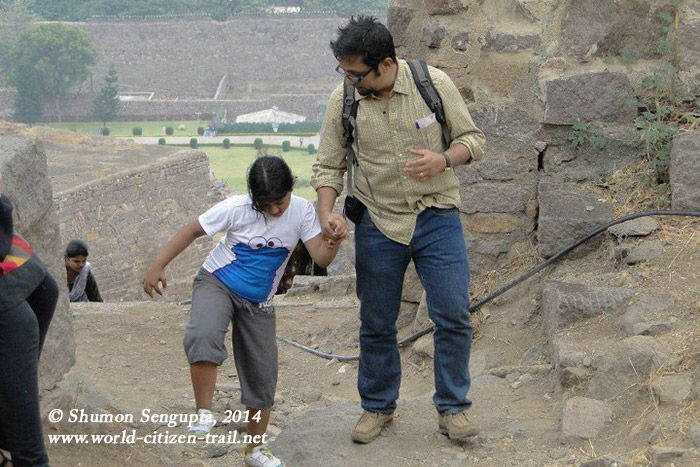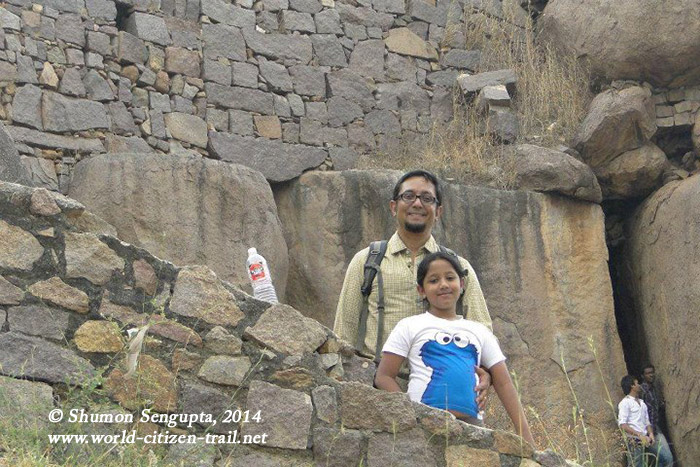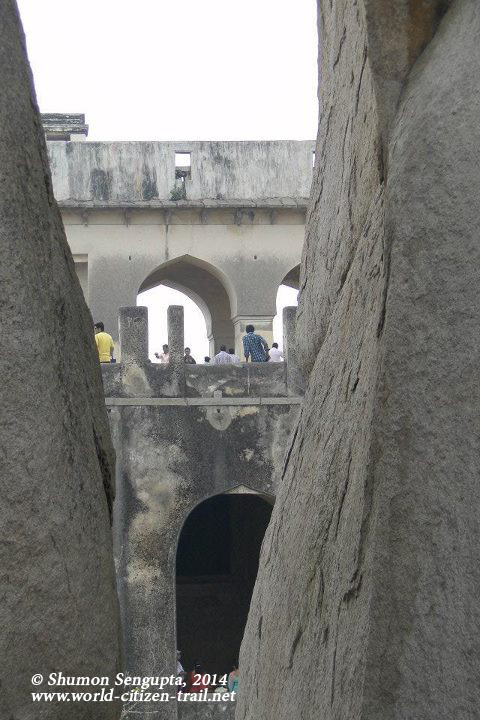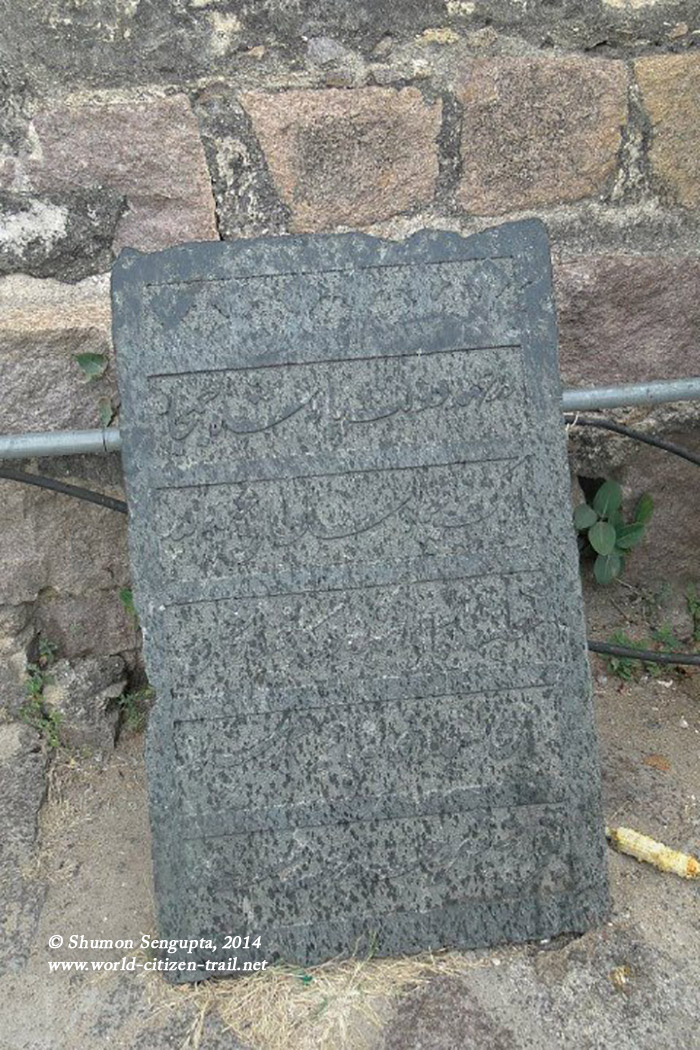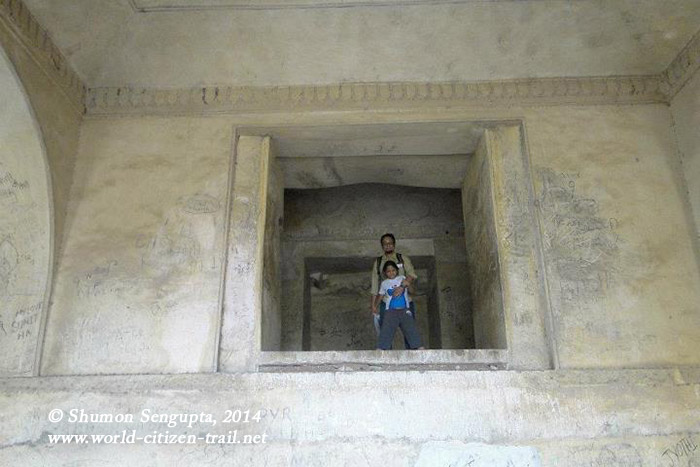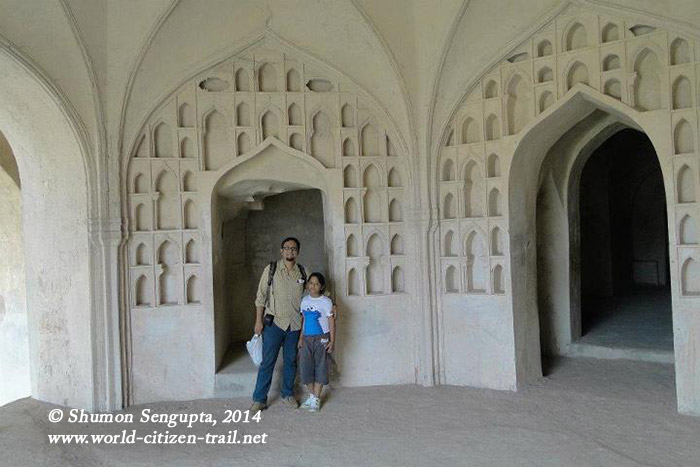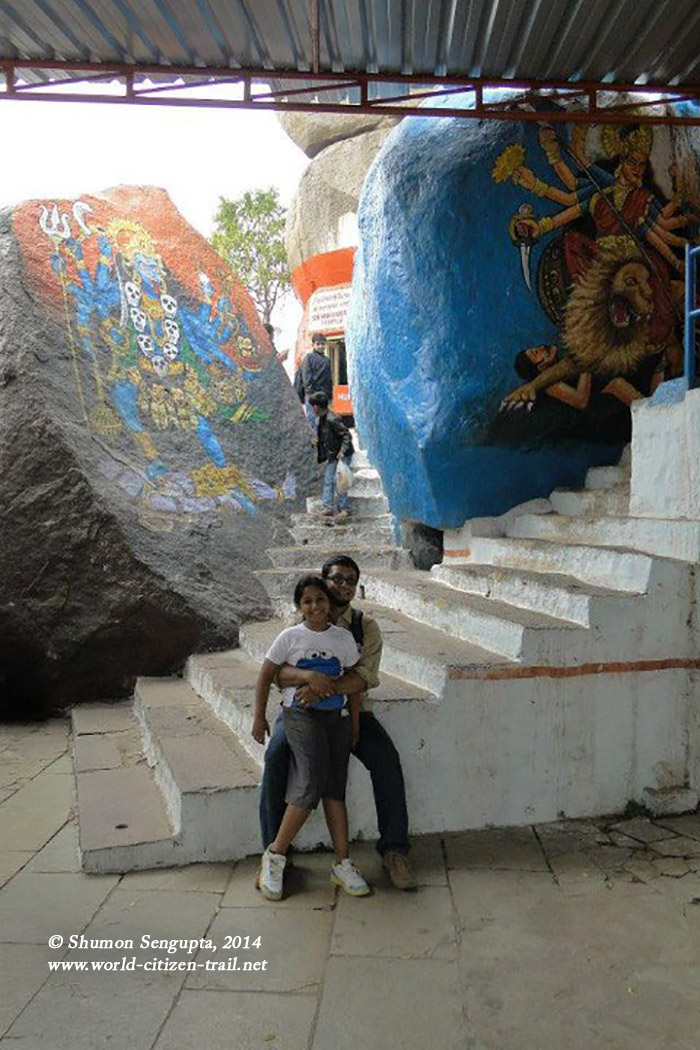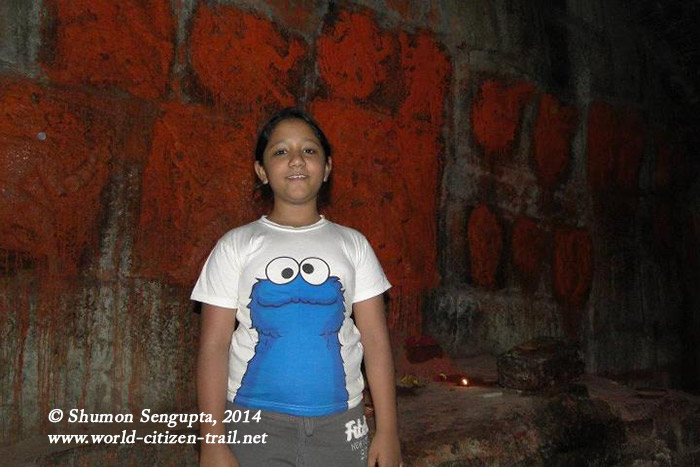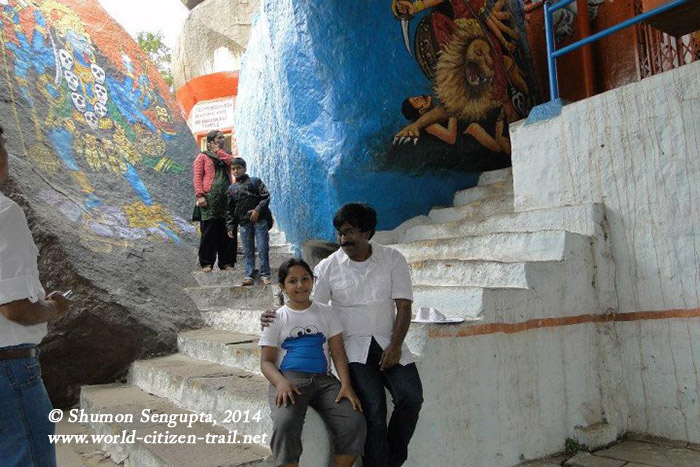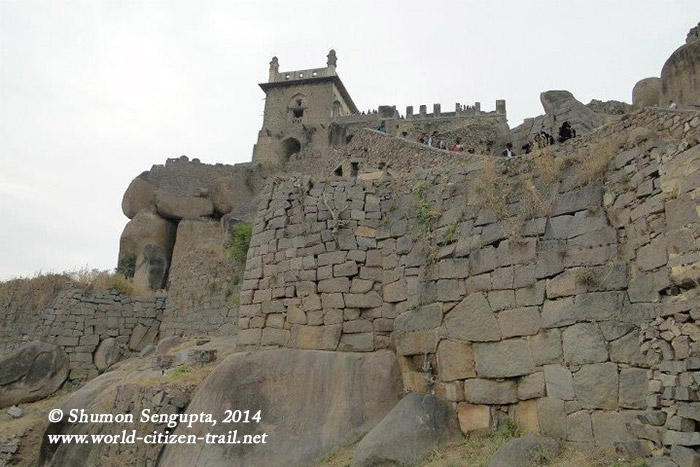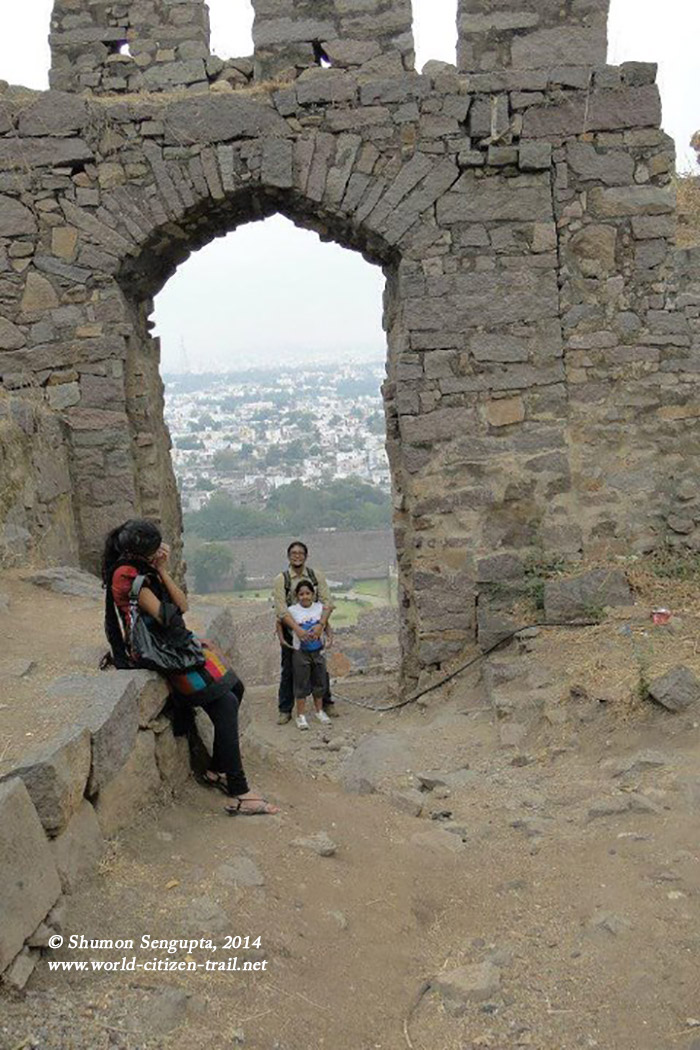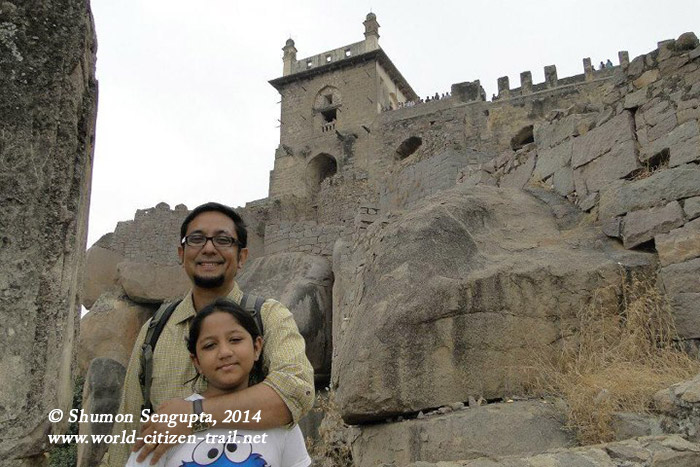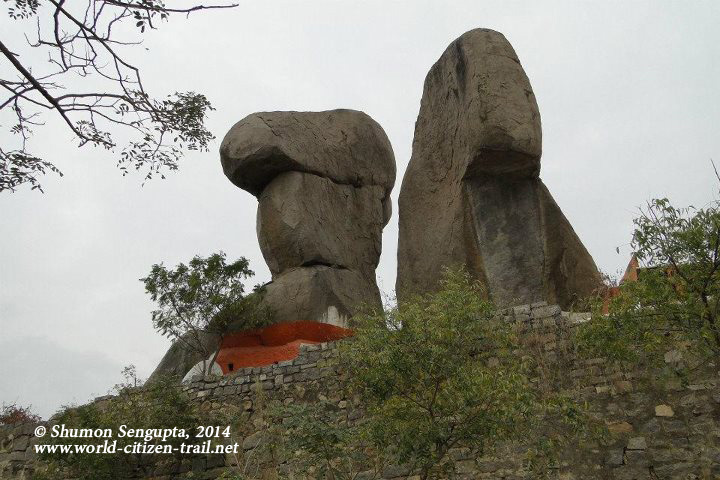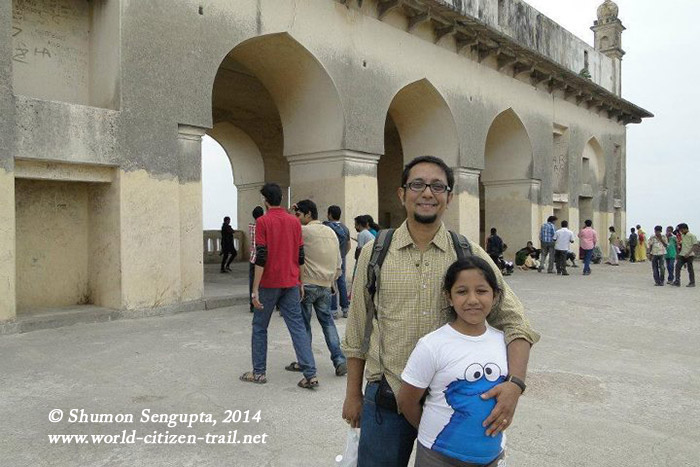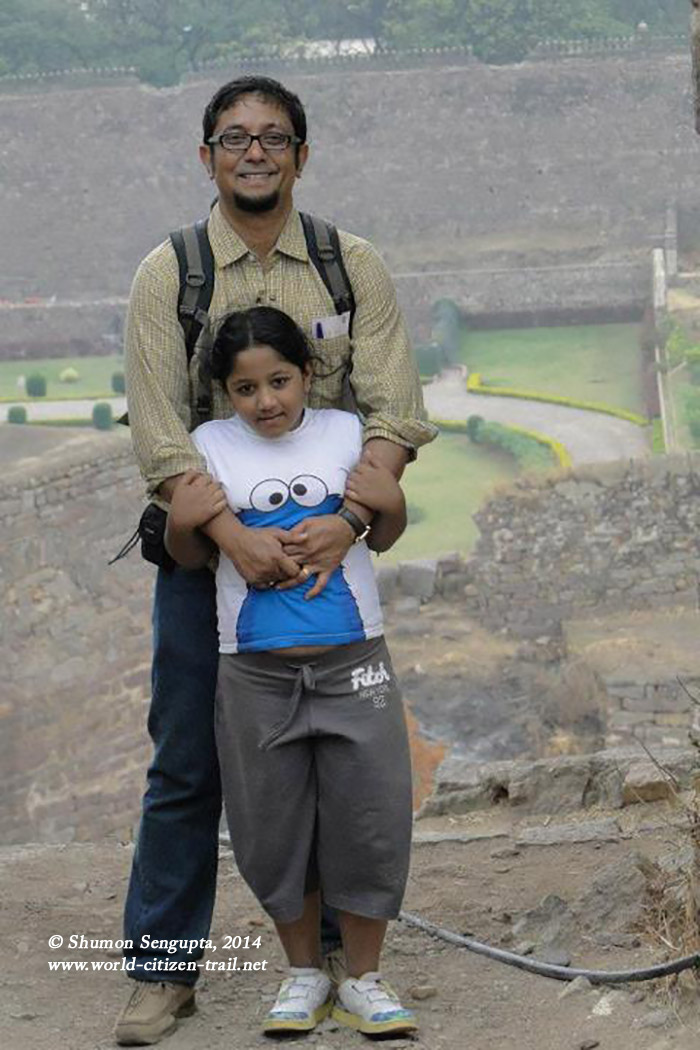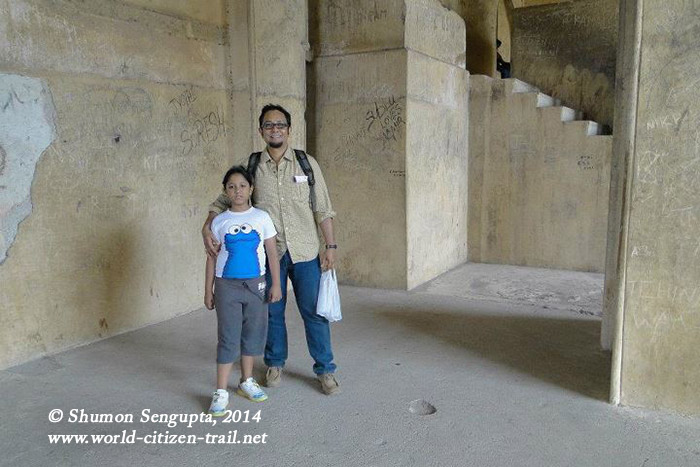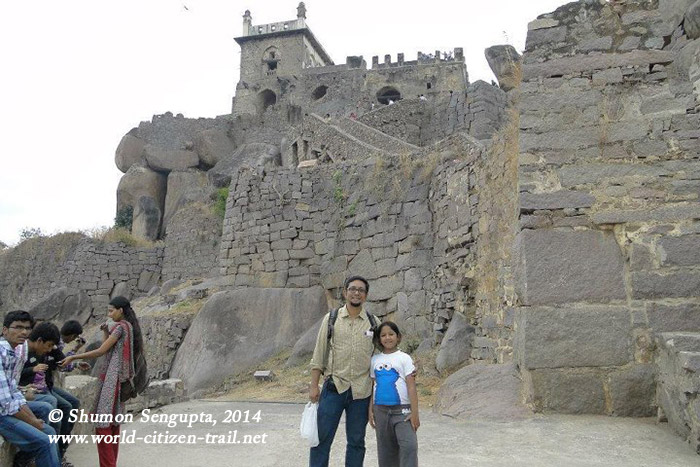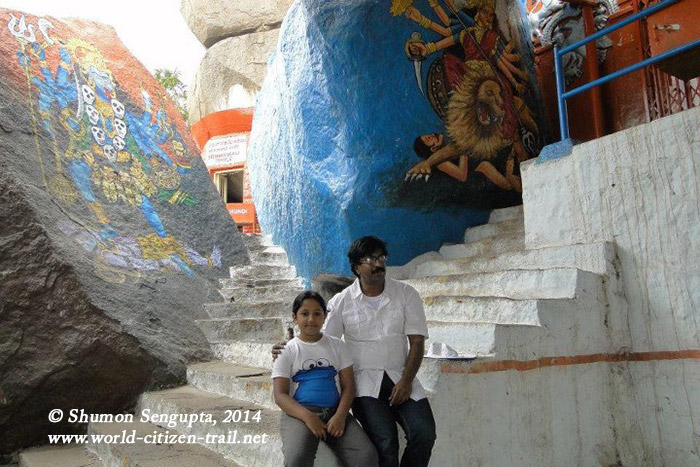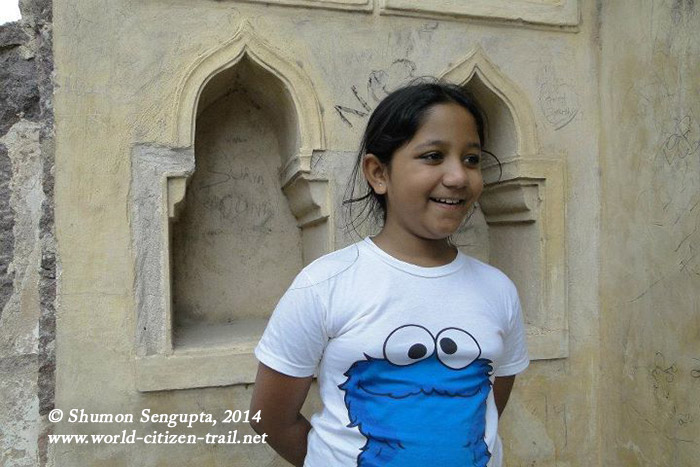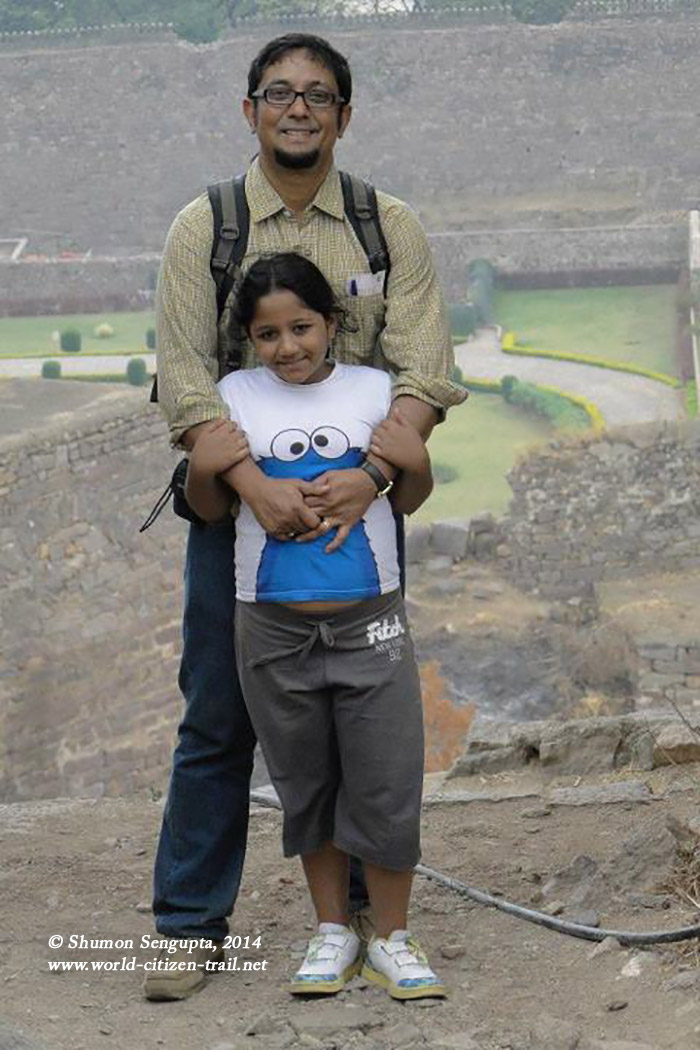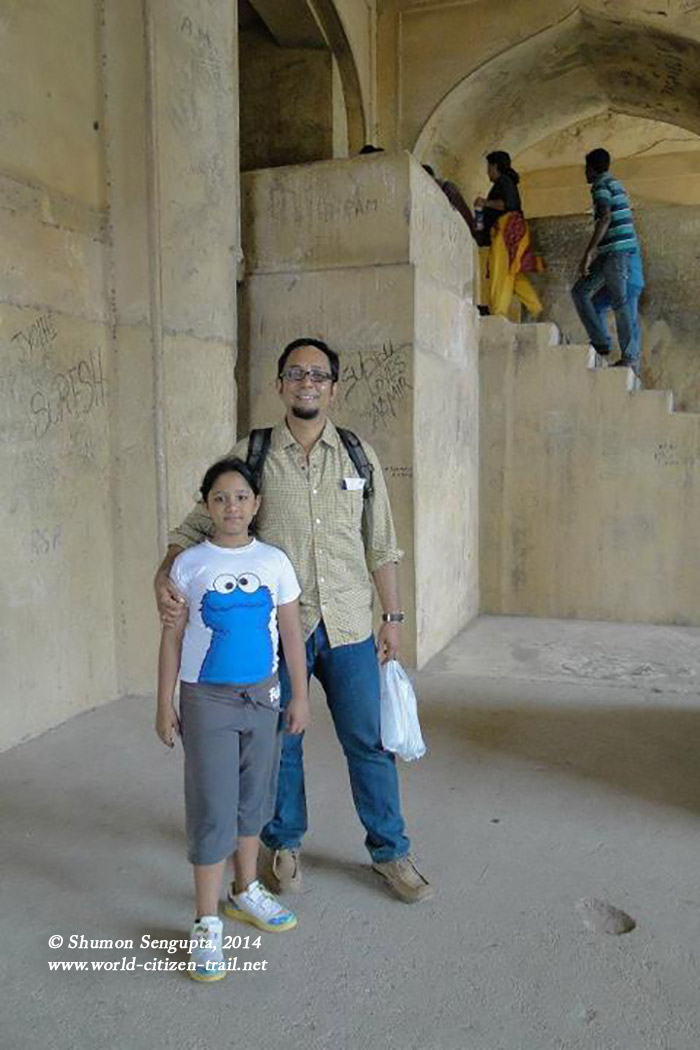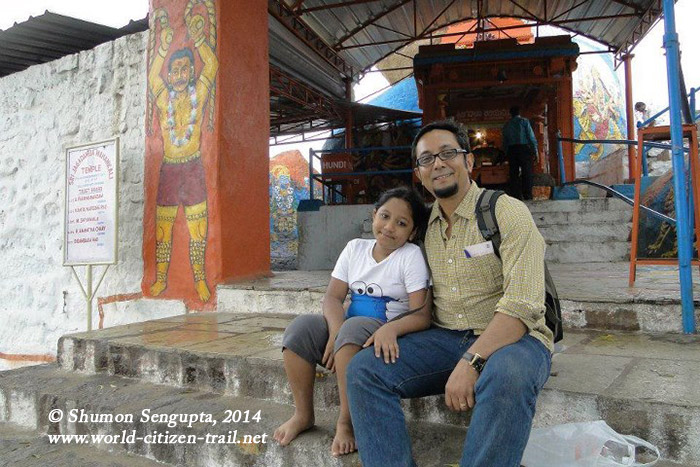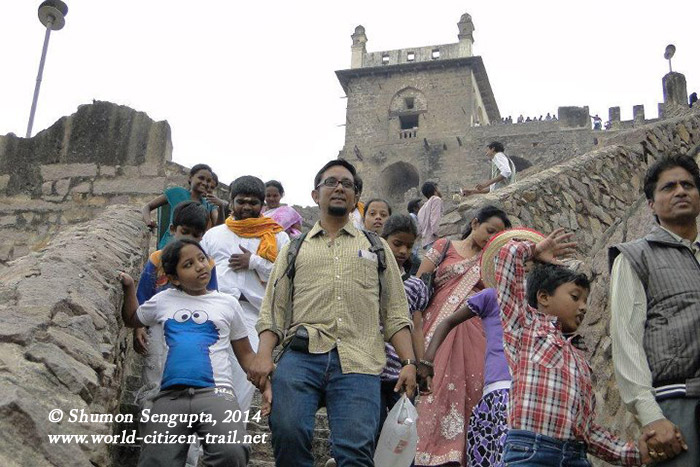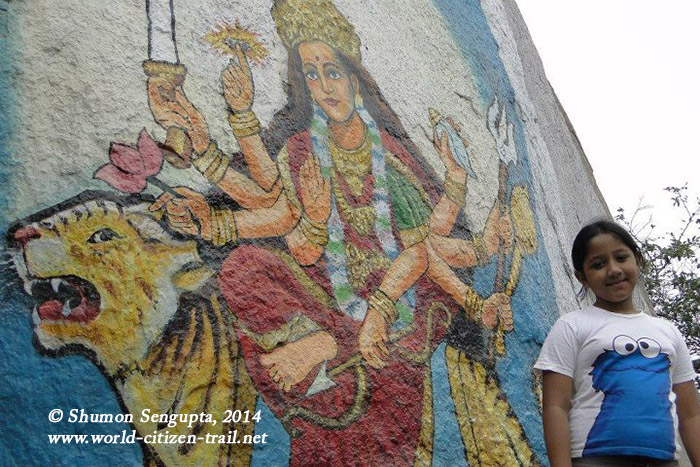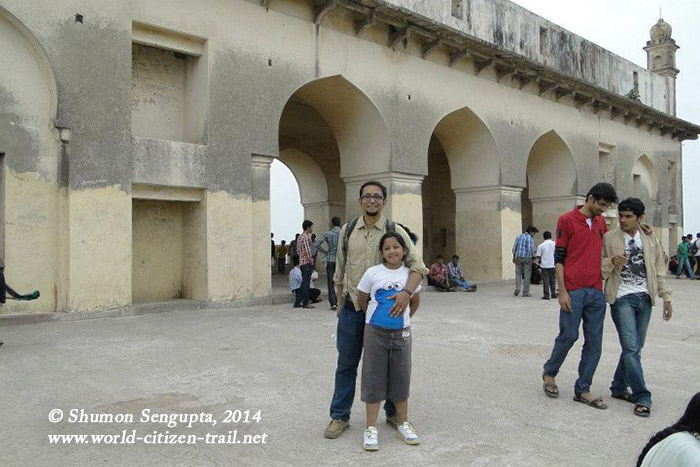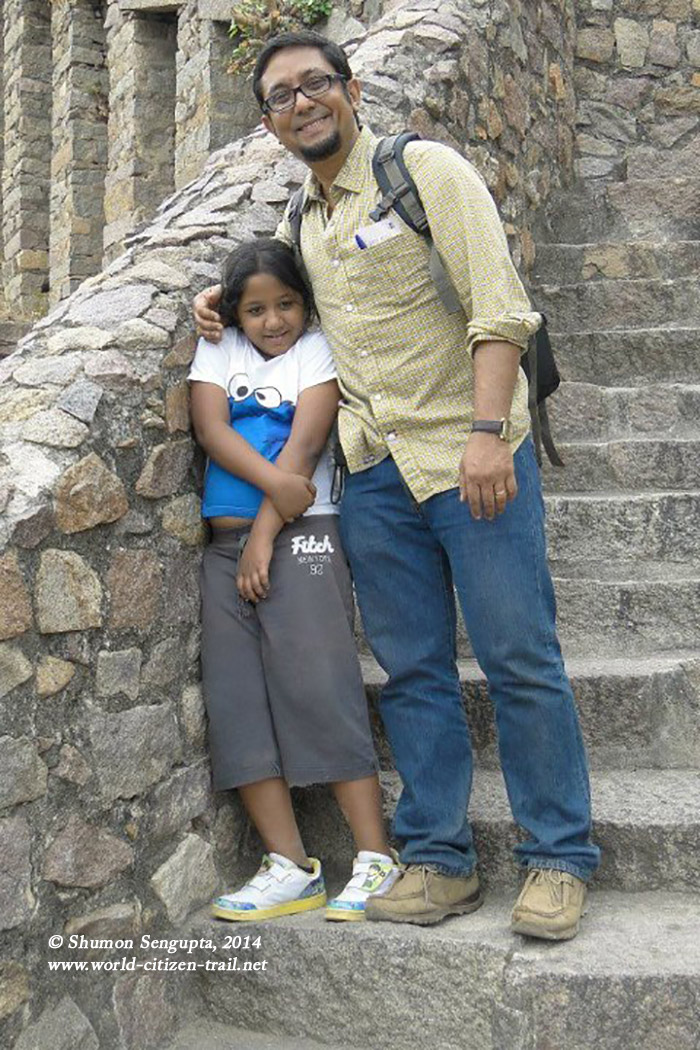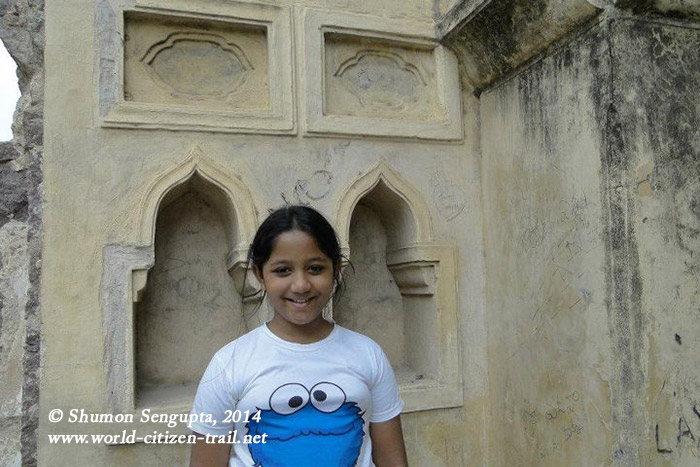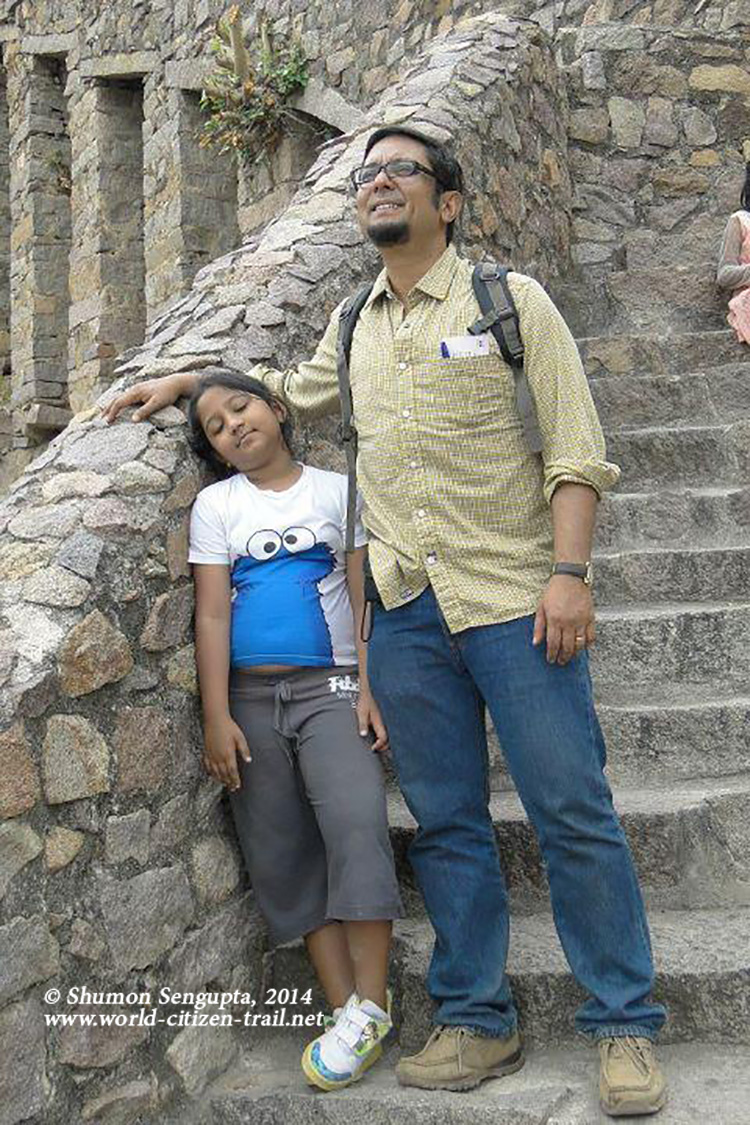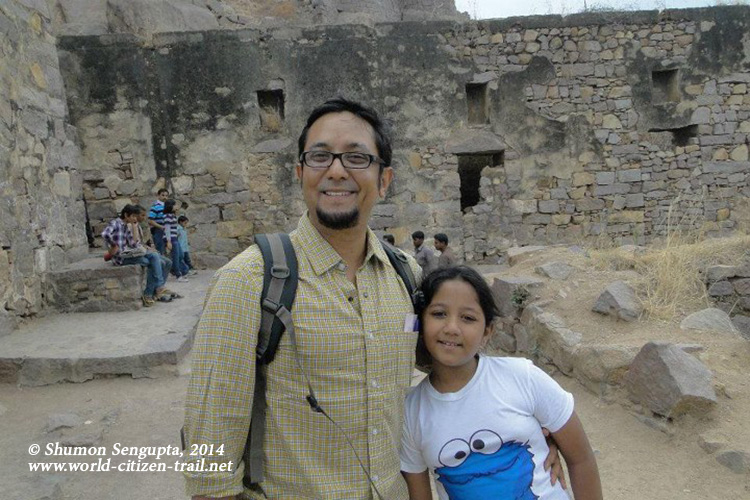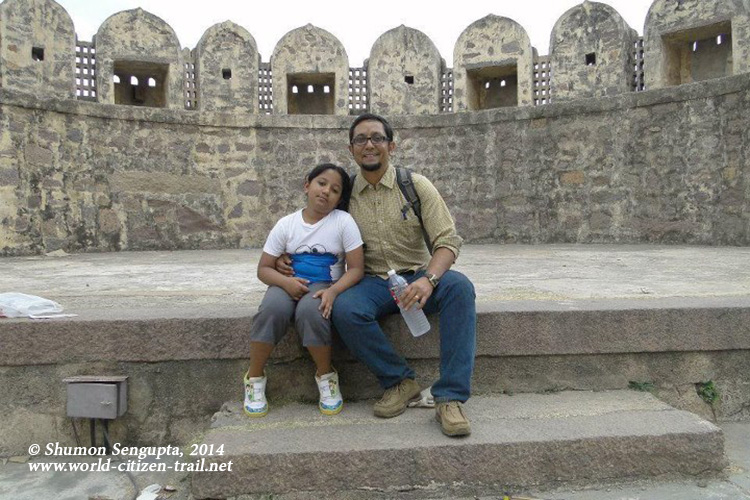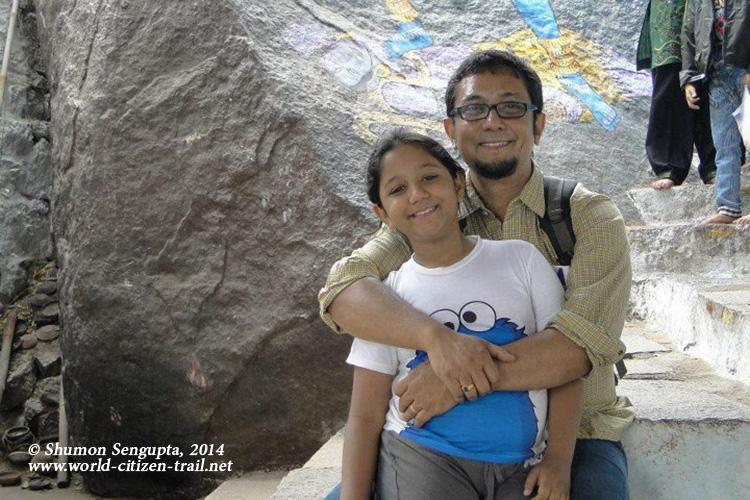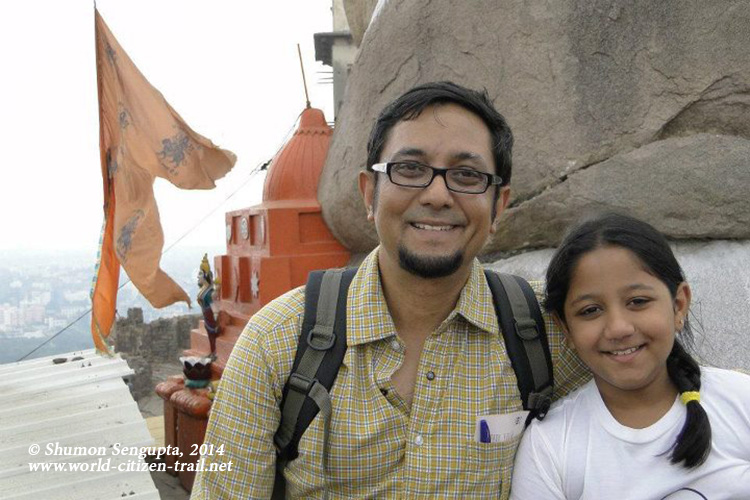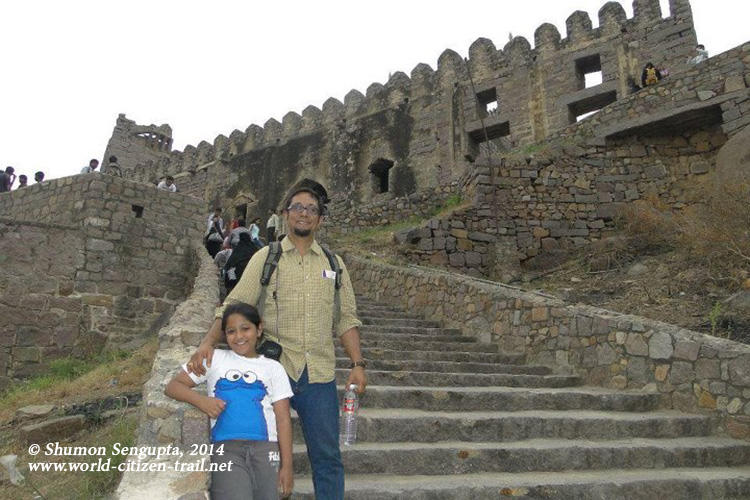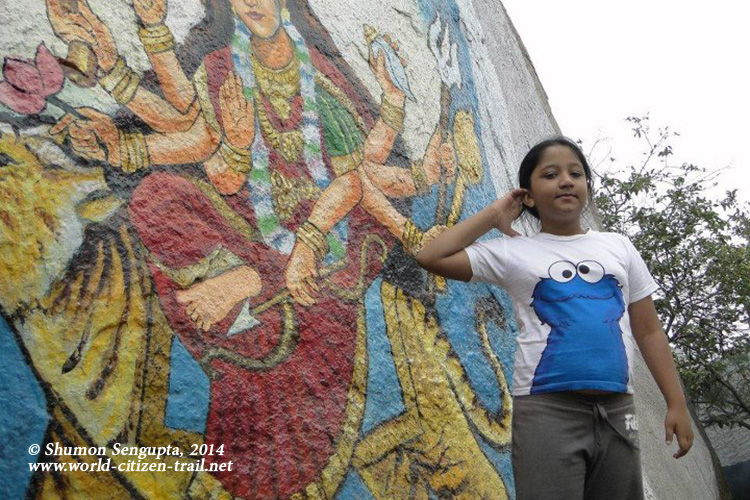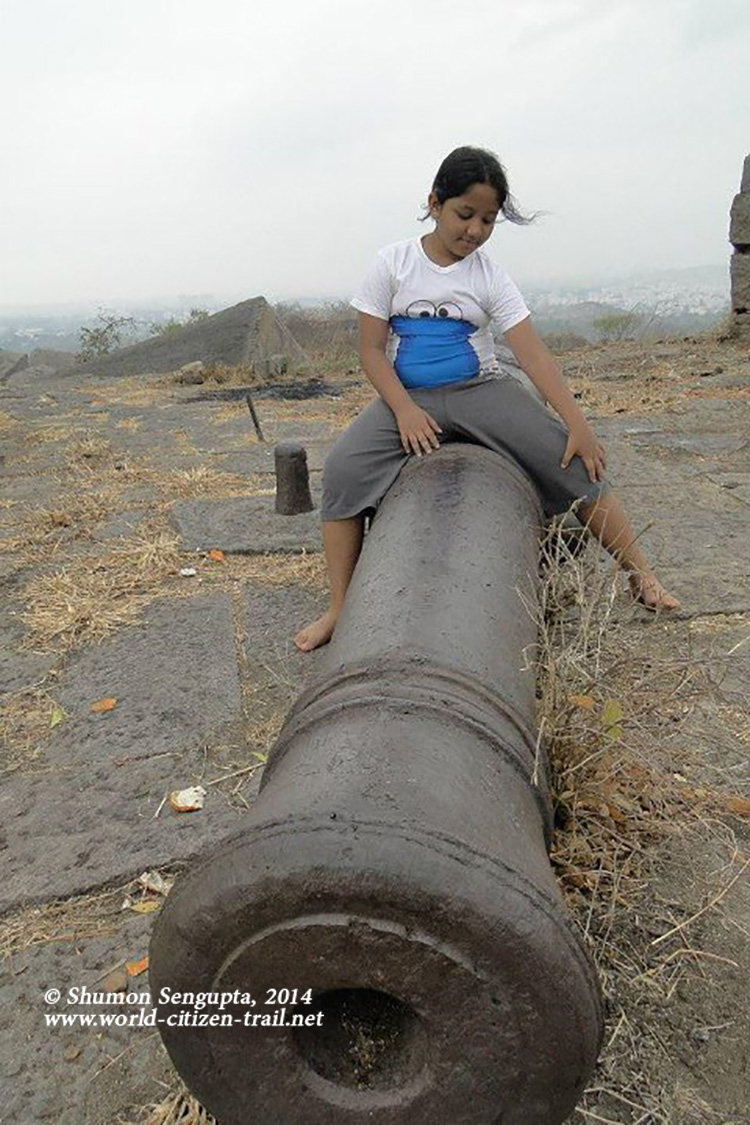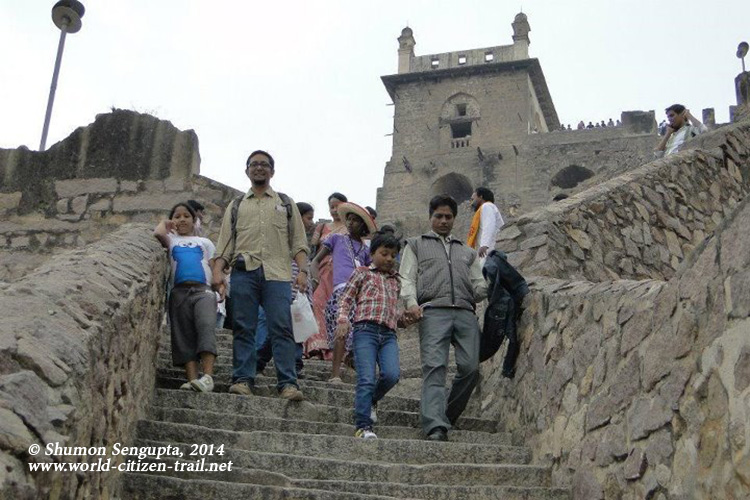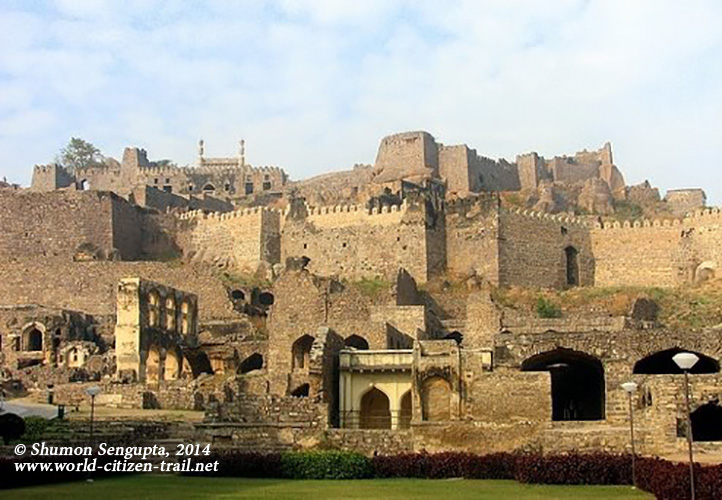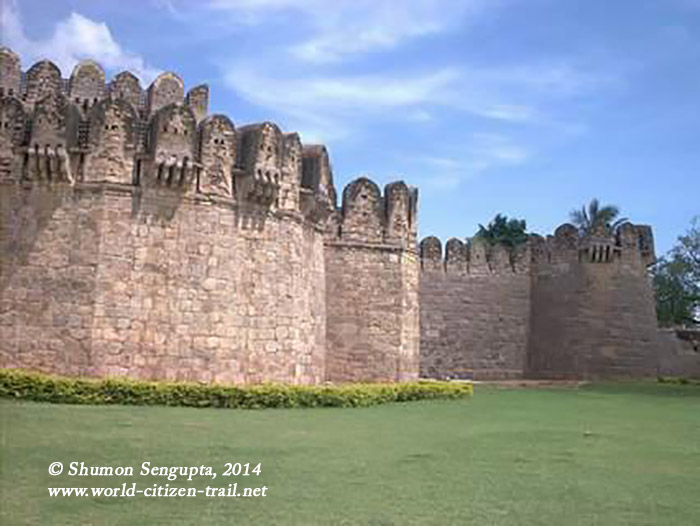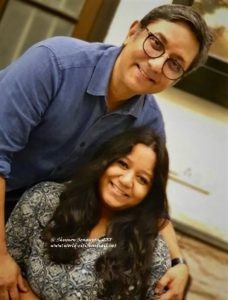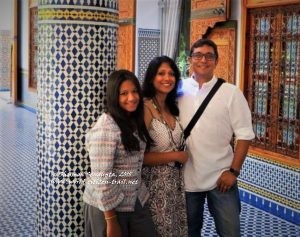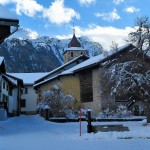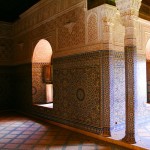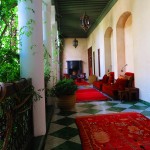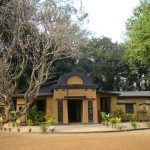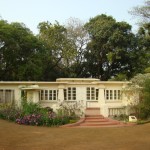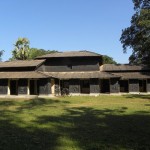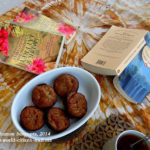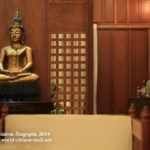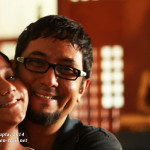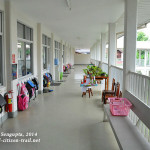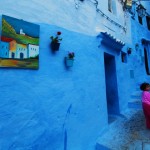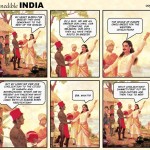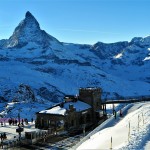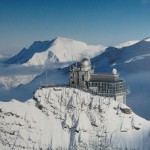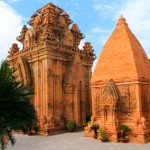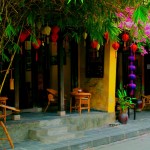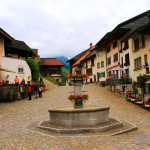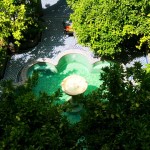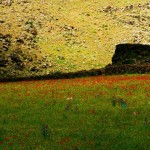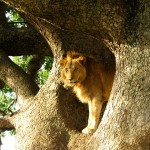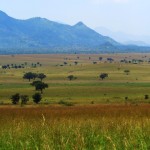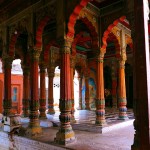Trip to the Golconda Fort, Hyderabad: December 2011
Minnie and I had an amazing tour of the Golconda fort on the 31st of December as a part of our exclusive Father – Daughter trip of India. It was a cool, crisp winter day, with an occasional overcast sky. My friend and ex-colleague, Mr. Nagendra Varada kindly took us around and to the top of the fort, sharing with us details of this wonderful fort, including the amazing stories and legends associated with different landmarks of the fort. His knowledge of the fort was infinite, as was his patience with Minnie. For Minnie and me, it was a walking lesson in history.
There couldn’t have been a better way to introduce an 8-year old to history.
About Golconda Fort:
Golconda Fort is one of the most spectacular forts in India, located 11 km. from Hyderabad, the capital of Andhra Pradesh in southern India. The 13th century Golconda Fort was built by the Kakatiya kings. The existing structure was later built by Qutub Shahi Kings into a massive fort with granite walls having eight gates and 87 bastions spread up to 7 kms, in circumference over a span of 62 years.
Acoustics:
One of the most interesting look of Golconda Fort is its system of acoustics. The sounds of hands clapped at the entry gate can be heard clearly at ‘Bala Hissar’, the highest point, a kilometre away.
The fort includes palaces, mosques, granaries, ammunition depots, a temple, factories, water supply system and the famous ‘Rahban’ cannon, that was used during the last seize of Golconda by Aurangazeb, to whom the fort ultimately fell.
Taramathi Gana and Premathi Nritya Mandir:
You can see two separate pavilions in outside of Golconda Fort, built on a rocky prominence the Taramathi Gana Mandir and the Premathi Nritya Mandir, both the legendary sisters Taramathi and Premamathi resided. Both gave their performance on a circular dais atop a two-storied structure, the Kala Mandir.
Sound and Light Show at Golconda Fort:
You can enjoy Golconda Fort with the sound and light, the show that brings the legend of Golconda to life. People gather to see and hear this show in the evening. The show has voice-over of Bollywood living legend Amitabh Bacchan. The show starts with a spectacular interplay of audio and visual effects. The show can be watched in English, Hindi and Telugu.
Diamonds:
The Golconda fort used to have a Vault chamber where once the famous Kohinoor and Hope diamonds were stored along with other diamonds. Golkonda was once renowned for the diamonds found on the south-east at Kollur Mine near Kollur (modern day Guntur district), Paritala (modern day Krishna district) and cut in the city during the Kakatiya reign. At that time, India had the only known diamond mines in the world. Golkonda was, in fact, the market city of the diamond trade, and gems sold there came from a number of mines. The fortress city within the walls was famous for diamond trade.
Magnificent diamonds were taken from the mines in the region surrounding Golkonda, including Darya-e Nur, meaning sea of light, at 185 carats (37 g), the largest and finest diamond of the crown jewels of Iran.
Many famed diamonds are believed to have been excavated from the mines of Golkonda, such as:
- Darya-e Nur
- Nur-Ul-Ain Diamond
- The Koh-i-noor
- The Hope Diamond
- The Regent Diamond
- Wittelsbach Diamond
Photo Credit: Nagendra Varada
